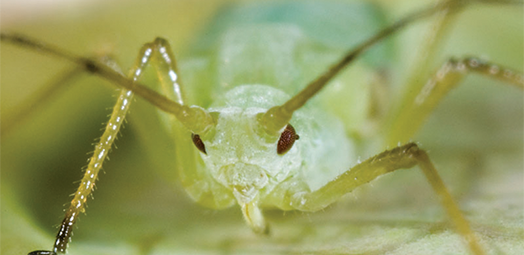
Whiteflies resemble tiny, white moths. The oval-shaped insects have two pairs of wings coated with a waxy powder. After hatching, whiteflies larvae are mobile with six legs. But after a few days, they molt and develop into rounder, thinner sedentary larva that resemble scales.
To expand your knowledge of whiteflies, here are 5 fascinating facts about them:
- Whiteflies feed primarily on the underside of leaves with their piercing mouths, stunting plant growth. They also cause plants to become sticky and discolored.
- These insects function as carriers that transmit over a hundred different plant viruses. These viruses are acquired as whiteflies feed on an already infected plant. As the whiteflies transition to a new plant and commence feeding, the viral particles infiltrate the plant, initiating a fresh cycle of infection.
- They reproduce rapidly - creating vast populations. Infestations are first localized, then expanded to larger areas.
- Adults attach themselves to plants and can be easily unsettled, fluttering up when the plant is watered or handled.
- Whiteflies plague a wide range of crops, including bedding and garden plants, potted plants and cut flowers.
Why are whiteflies one of the most common insects found in greenhouses?
Whiteflies are among the most prevalent insects found in greenhouses due to several factors:
- Insects are always simultaneously in different stages of growth, most control programs are ineffective.
- The controlled environment of greenhouses, designed to optimize plant growth, inadvertently provide whiteflies with an ideal haven for their life cycle.
- Whiteflies' small size and excellent mobility make them particularly well-suited to thrive in the relatively confined spaces of greenhouses. Their ability to disperse easily within the controlled environment further contributes to their widespread presence.
- Greenhouses often contain a concentrated variety of plants that whiteflies find suitable for feeding and breeding. The diversity and proximity of these host plants can contribute to the rapid spread of whiteflies.
How can you control them?
Most insecticides target whiteflies in the adult stage of their development. Since insects are never all in the same stage of growth at the same time, most control programs are not effective. As an insect growth regulator, Enstar® AQ Insect Growth Regulator controls whiteflies at all four stages of growth and prevents the insect from progressing to the next stage of its life cycle.
Use Enstar® AQ alone or in conjunction with an adulticide, such as Mavrik Aquaflow® Insecticide/Miticide (Mavrik Aquaflow®). When applying Mavrik Aquaflow®, be sure to also treat the underside of leaves which helps to provide immediate control of adult and nymph whiteflies. For broad-spectrum control with Mavrik Aquaflow® insecticide, use eight ounces per 100 gallons of water to treat 20,000 square feet every 14-28 days until insects are controlled. Once whiteflies are under control, a preventative program will keep damaging populations from developing. See Enstar® AQ label rates for both preventative and curative programs.
The combination of Enstar® AQ teamed with Mavrik Aquaflow® is an unbeatable, cost-effective program.



